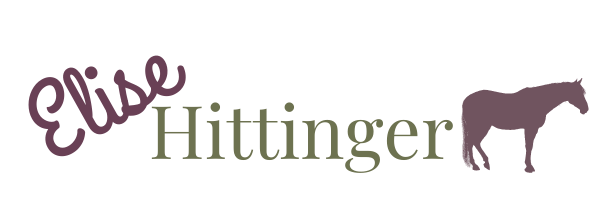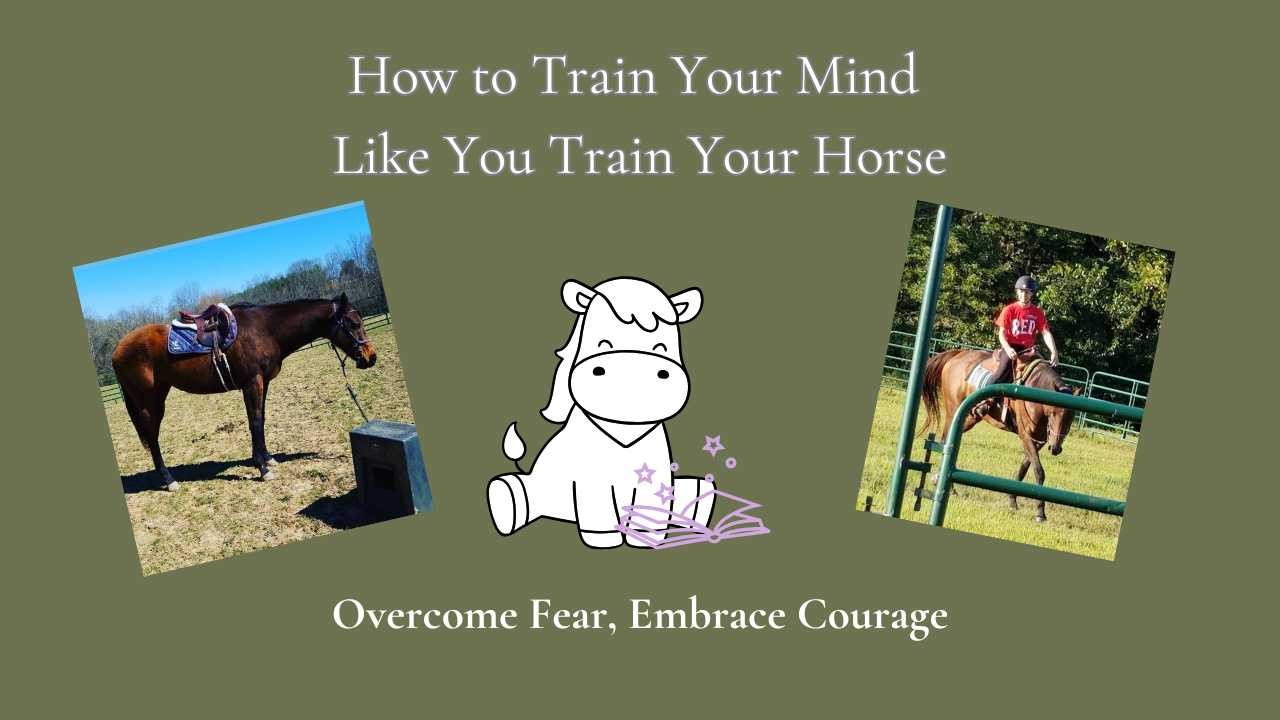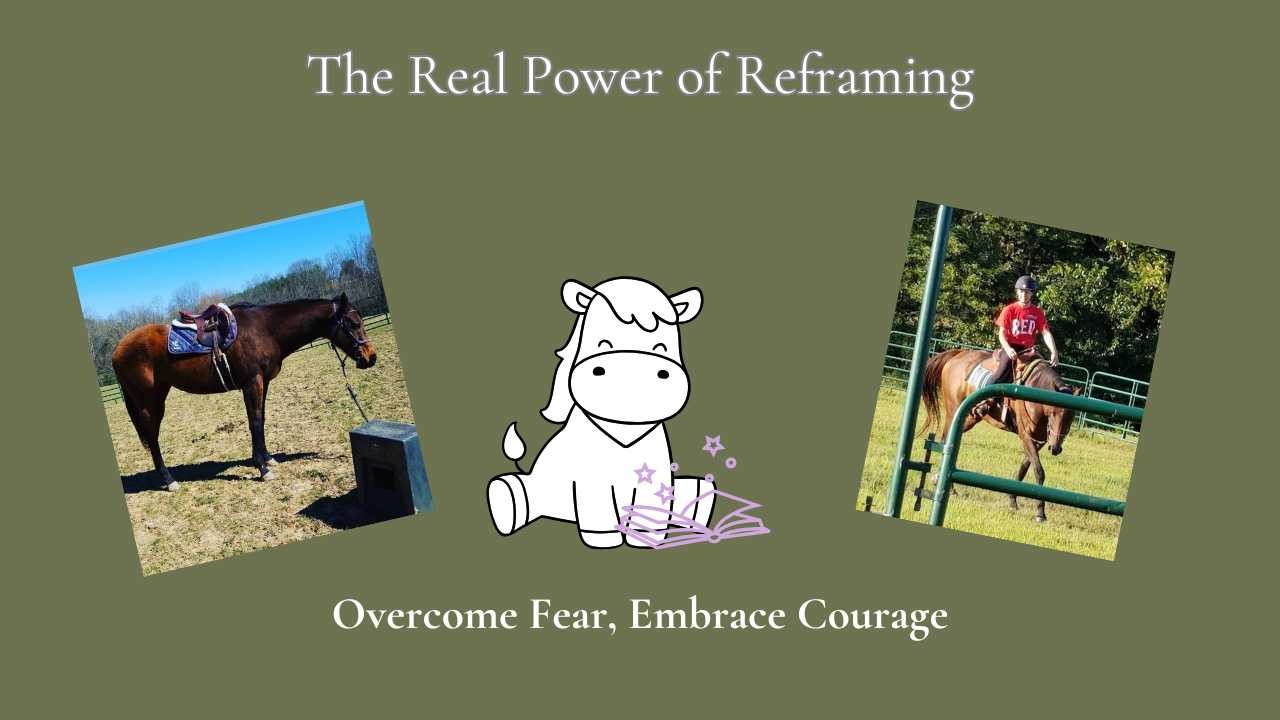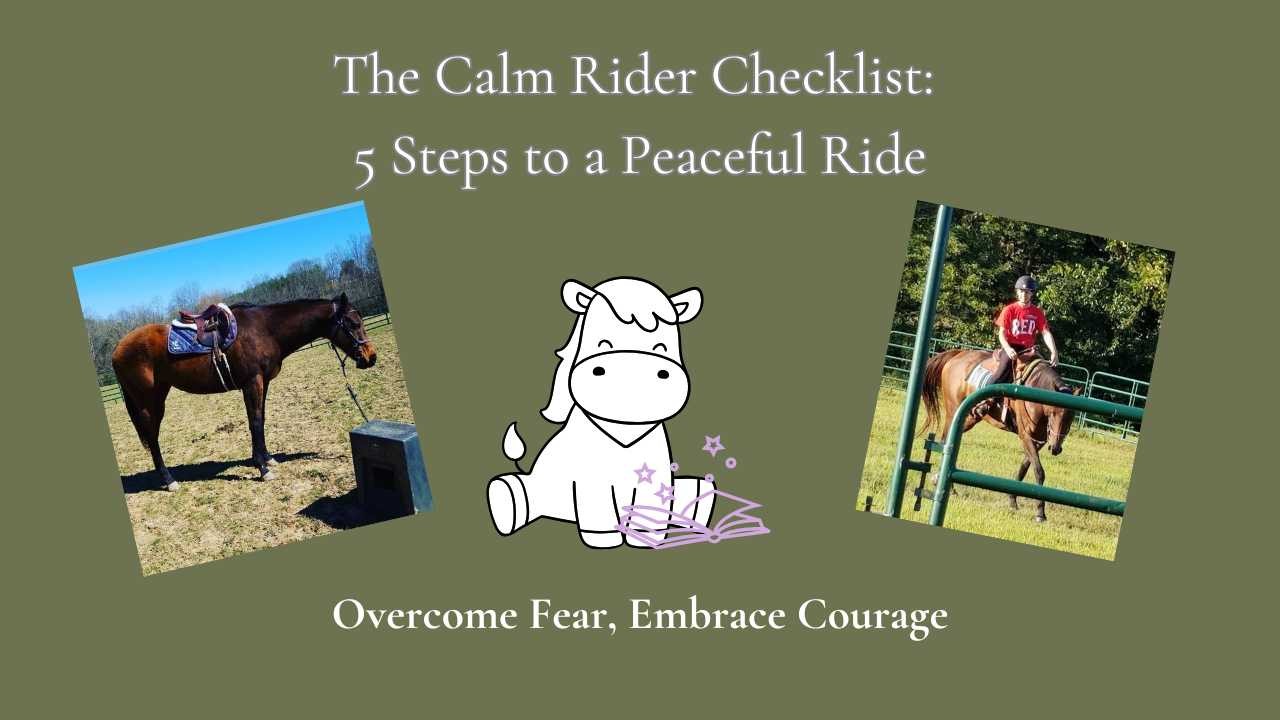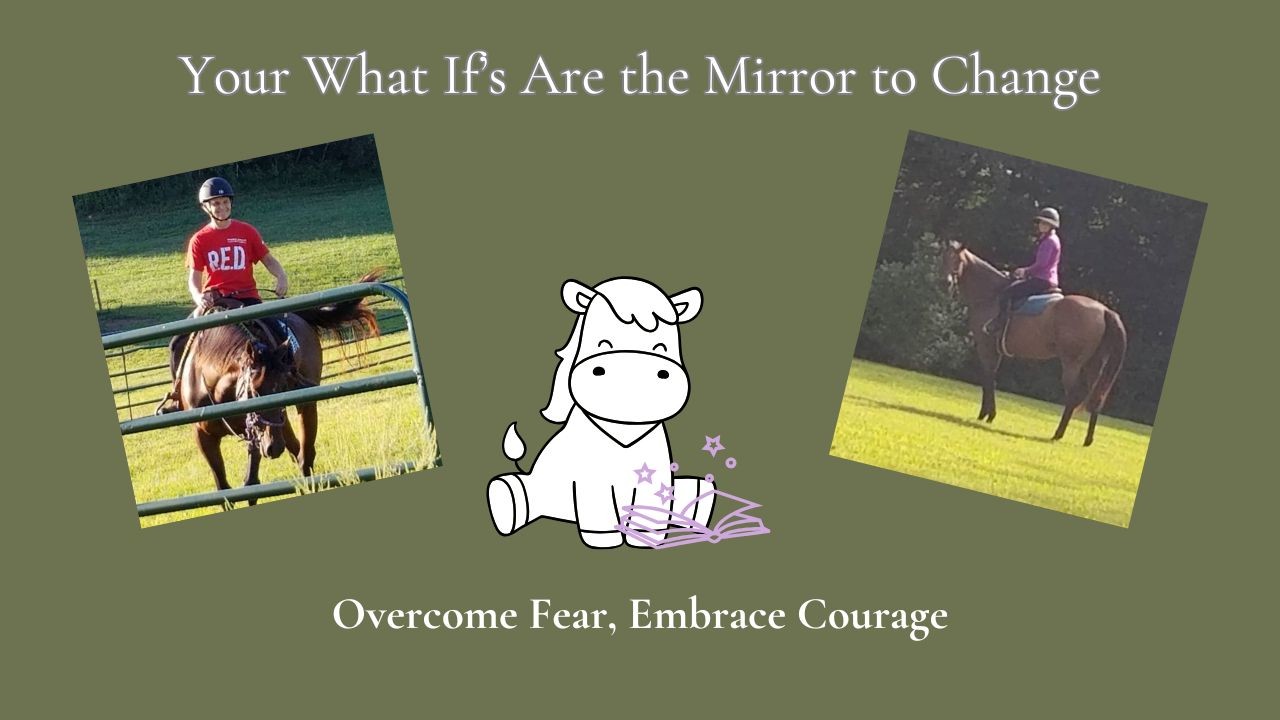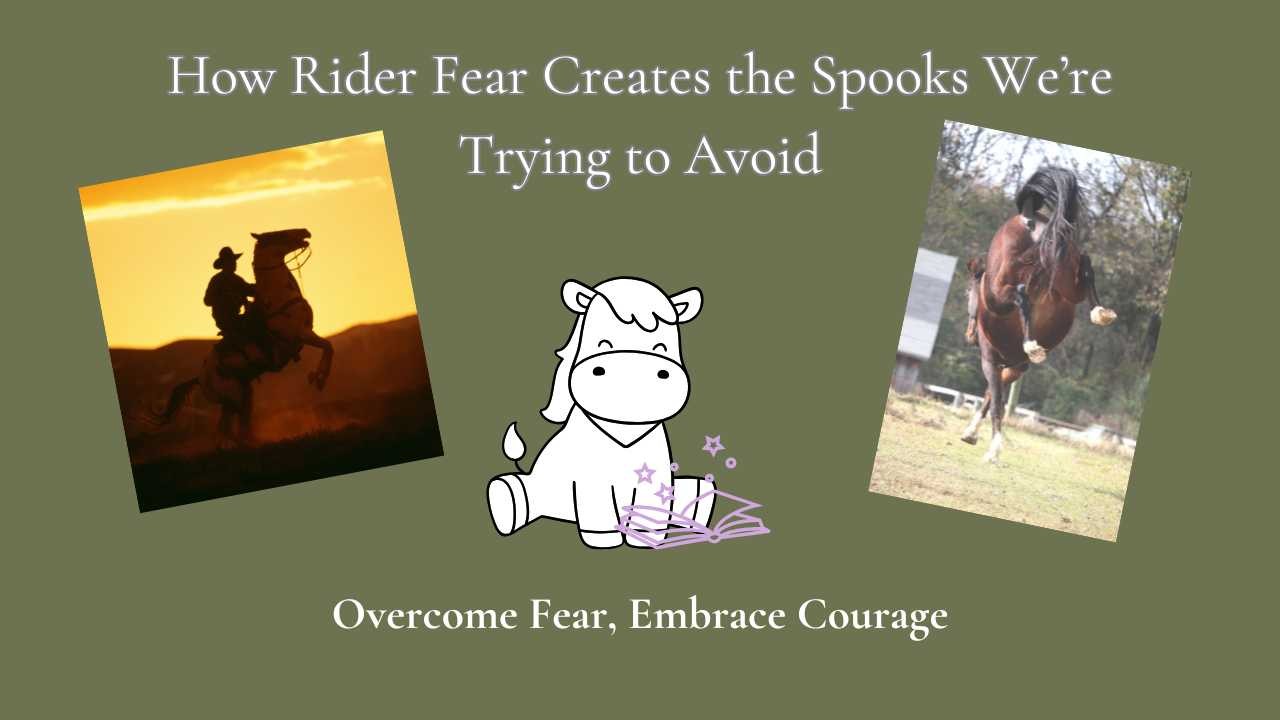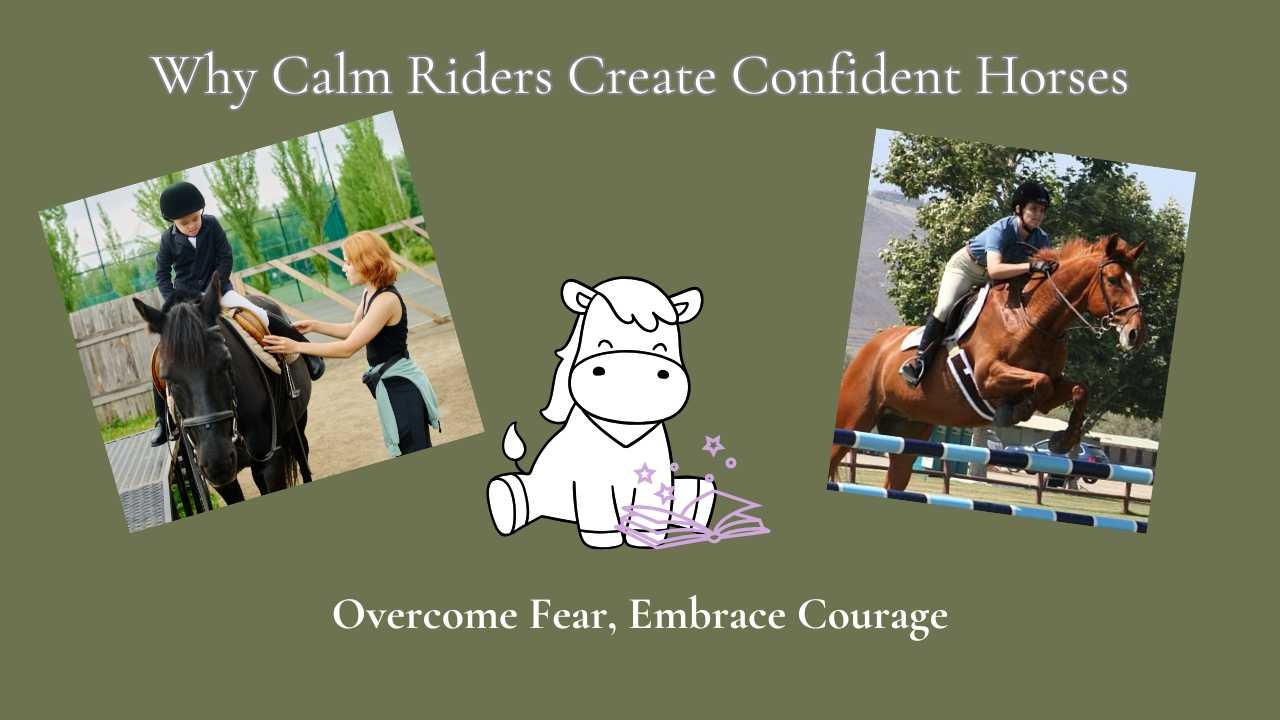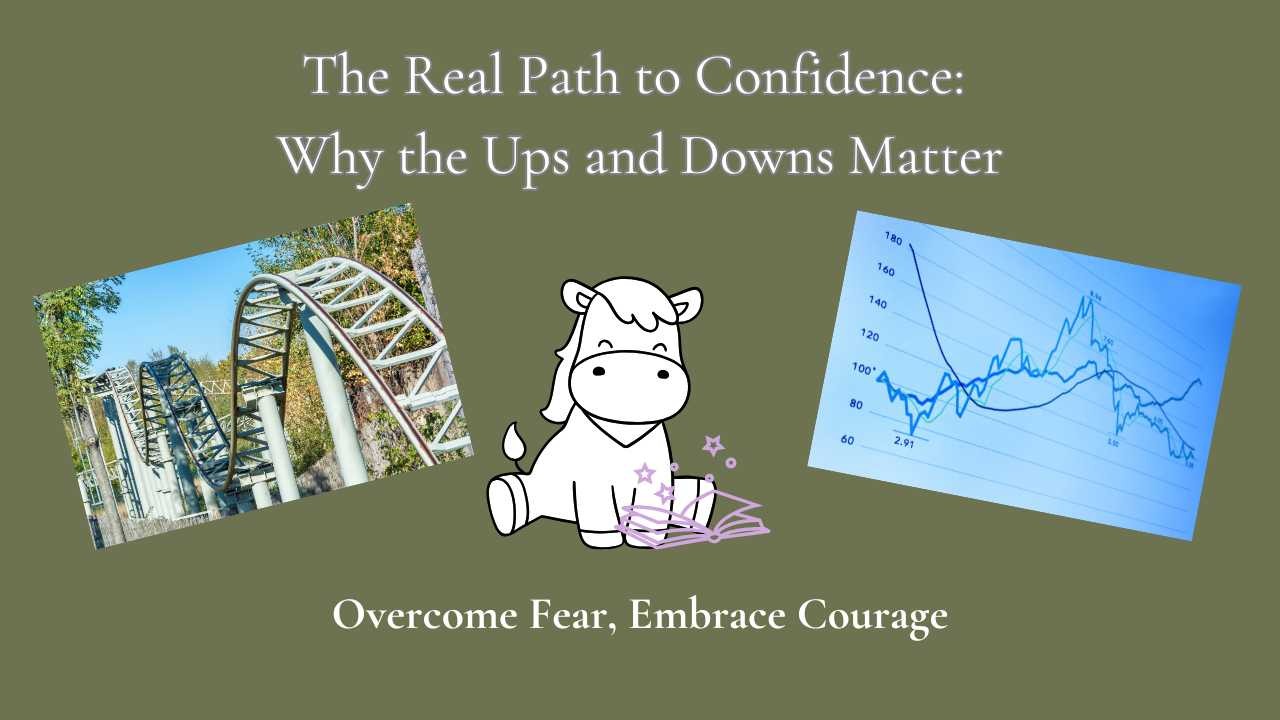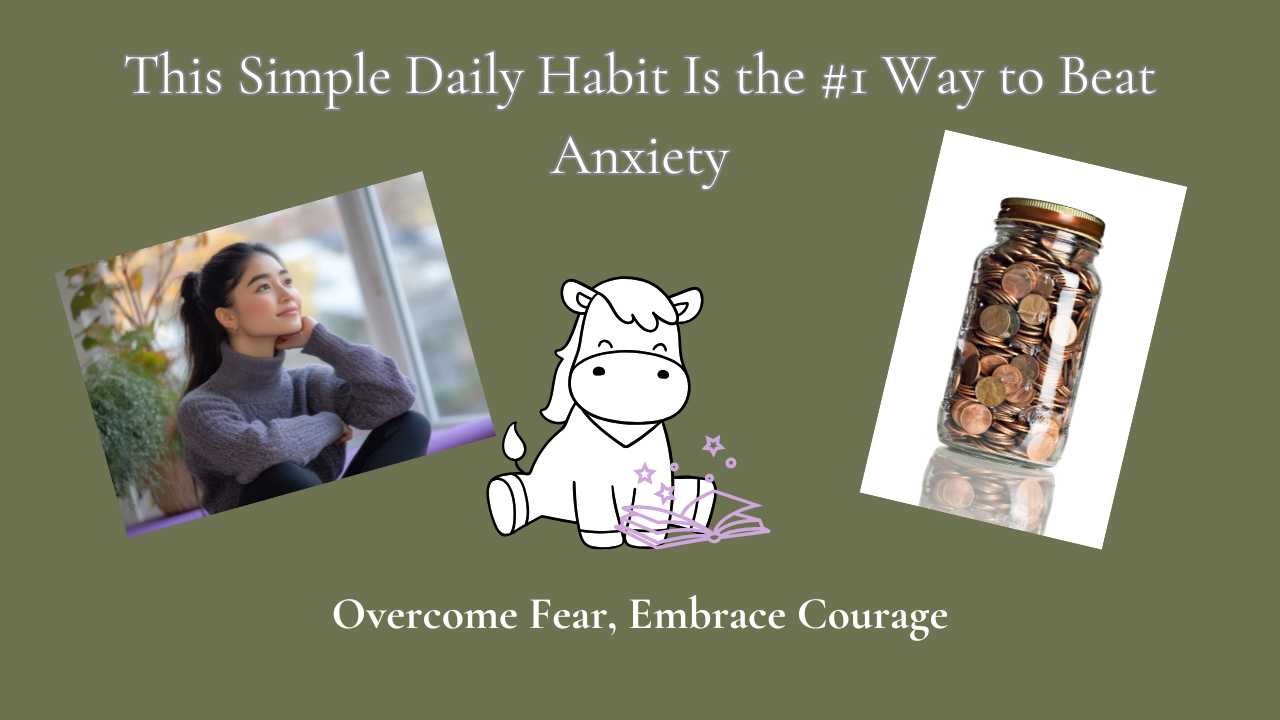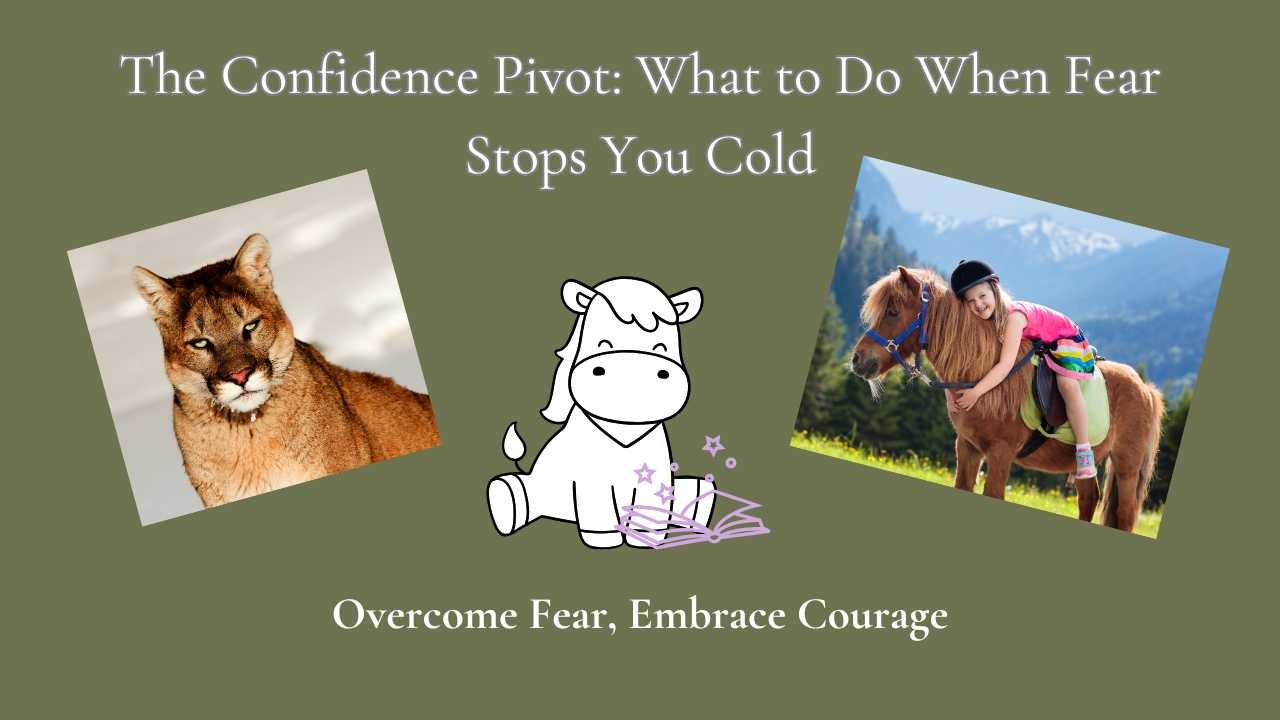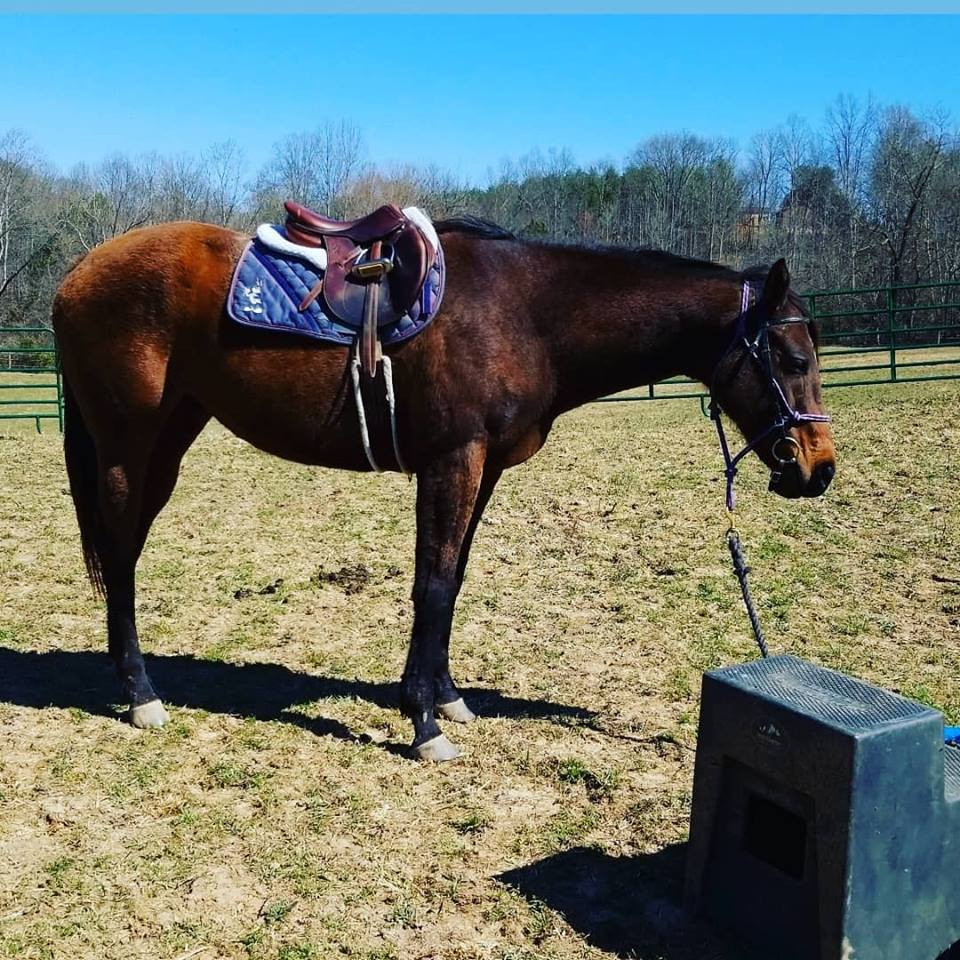 There I was, ready to ride—horse tacked up, mounting block in place. It was my first time riding outside the "fence" since my accident. I had reached this point countless times before but never quite managed to get my leg over the saddle. This time, I knew it was different. I had learned, prepared, and practiced. My horse was calm, waiting at the mounting block. I knew what to do. I had the tools. This time, I was going to "get back on the horse."
There I was, ready to ride—horse tacked up, mounting block in place. It was my first time riding outside the "fence" since my accident. I had reached this point countless times before but never quite managed to get my leg over the saddle. This time, I knew it was different. I had learned, prepared, and practiced. My horse was calm, waiting at the mounting block. I knew what to do. I had the tools. This time, I was going to "get back on the horse."I took four steps. And celebrated. I DID IT!
It’s a phrase we hear when facing setbacks, fear, or self-doubt: "Get back on the horse." But what does it really mean, especially in horseback riding or any personal challenge?
Getting back on the horse is more than a physical act. It’s a mental one—a commitment to face fear, overcome obstacles, and move forward, even when things don’t go as planned. It’s about having a plan for the contingencies that arise. After a fall or fearful experience, the challenge is not just physical—it’s rebuilding trust in yourself and your horse. It’s about practicing courage, resilience, and self-compassion. When we face fear, it's easy to let self-doubt take over. But fear doesn’t define us. Getting back on the horse is about taking action despite uncertainty and regaining control.
The first step? Acknowledge your fear. It’s okay to feel scared, vulnerable, or even angry. But instead of letting these feelings hold you back, recognize them as part of the growth process. Fear means you’re pushing your boundaries—and that’s how you grow.
The next step is building confidence—sometimes through small steps. Spend time with your horse, connect, and practice at a slower pace. Each small success builds your courage to tackle more challenging moments.
Getting back on the horse is a metaphor for life. It’s about trusting your strength, learning from past experiences, and stepping forward with renewed purpose.
Don’t let fear hold you back. Get "The Ultimate Riding Contingency Guide" for quick tips and techniques to handle unexpected situations and get back on track with confidence
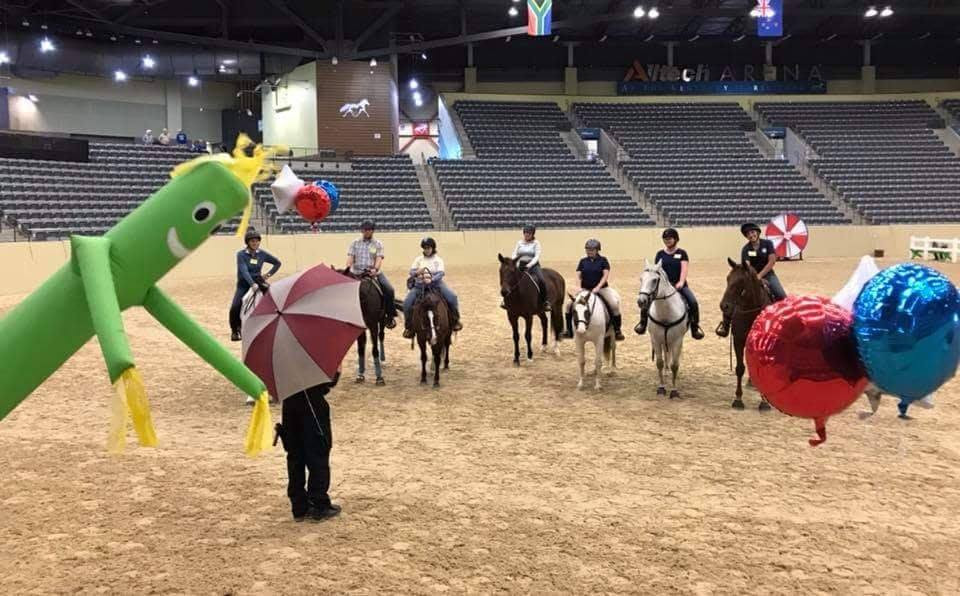
Transforming Fear Into Confidence: A Lesson from the Gauntlet
Sitting in a circle, I knew that three of us would be chosen to "run the gauntlet," a challenge involving two ex-Navy SEALs and a SEAL trainer who had been relentless with me all day. I was terrified of him. I’m small, and he was huge. It felt a lot like being with a horse that intimidates you.
When my turn came, I had to cross the room, passing all three men, who each controlled a third of the space. The first girl couldn’t make it past the first guy. She was bruised and humiliated. Watching this angered me deeply. Seeing her treated that way fired me up, and suddenly, fear wasn’t in charge anymore. I was angry—and that anger gave me confidence.
I crossed the gauntlet. The first two weren’t too difficult, but the trainer grabbed me. In a flash, I kicked behind his knees, bringing him down (he later needed stitches!). I finished.
This experience taught me a powerful lesson: anger, especially when directed at your fear, can fuel confidence. Confidence builds on itself, creating momentum for overcoming challenges.
As my mom would say, "Get up your gumption!" We all have it in us to conquer fear. This tool can be part of your toolbox for overcoming fear, whether you’re riding or facing any challenge.
3 Tips for Turning Fear into Anger:
1. Feel the Anger, But Don’t Act Out:
This is key. The anger you feel is energy, not something to direct at others. Think of it as a shield, giving you the courage to face your fear and take control of situations—like getting back on your horse.
2. Transform Your Fear:
Write down three things that make you anxious. Sit with those feelings, then turn them into anger. Ask yourself, "What would I do differently if I weren’t afraid?" Channel that anger towards the fear itself. (Be sure you're focusing on perceived fear, not legitimate dangers.)
3. Practice, Practice, Practice:
Start small. When you feel anxiety, flip it into anger. Find something about the situation to feel angry about. As you practice this, try it when approaching your horse or getting ready to trot or canter. Watch how your confidence shifts.
When you combine this anger with knowledge, you’ll be prepared for anything. Use my free guide, The Ultimate Riding Contingency Guide, to learn techniques for managing fear when riding—whether dealing with a rear, buck, bolt, or spook. It’s packed with insights from 50 years of experience to help you stay safe and in control.
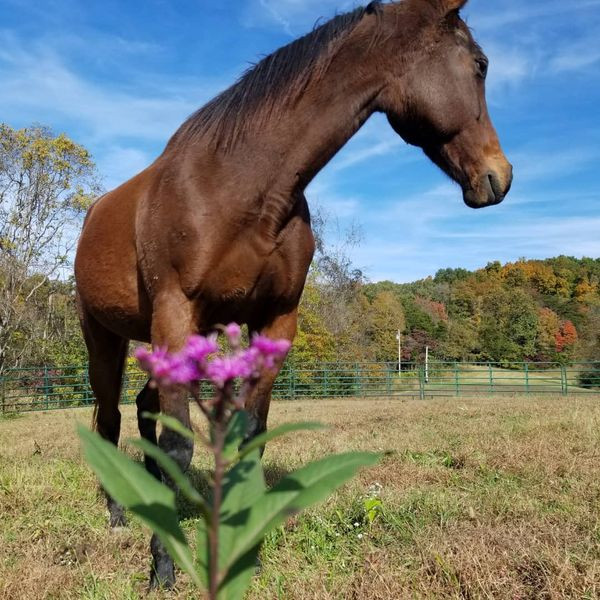
One of my favorite childhood memories is playing tag while swimming on our horses in the hot summer of the San Fernando Valley. The heat was intense, but the thrill of riding into the water until our horses couldn’t touch was pure joy. The rules were simple: whoever let their horse touch the ground would be “out” and have to sit in the sun while the rest of us played on. It wasn’t just the game that made those days so memorable, but how our time with our horses made us feel—free from stress and worries.
Looking back, I realize how much riding helped us release the pressures of daily life. The more we rode, the less the world around us affected our sense of peace. Whether we were competing or enjoying a quiet trail ride, being with our horses was an instant stress reliever. It taught me that sometimes, the best way to reset emotionally is to step away from life’s demands and reconnect with something that brings us joy.
The Science Behind Stress Relief
Research shows that spending time with horses can reduce stress and anxiety. The act of riding encourages the release of endorphins—those "feel-good" hormones that promote relaxation. Additionally, interacting with horses has been found to lower levels of cortisol, the hormone related to stress. Simply being around horses helps us regulate our emotions and stay present.
The Healing Power of Horses: How Their Energy Calms Us
Horses don’t just help us unwind; they actively guide us to calm. One of the most fascinating aspects of spending time with horses is how attuned we become to their rhythms. Horses have a slower heartbeat (40-60 beats per minute) compared to our faster pulse. When we’re near them, our heartbeat naturally syncs with theirs, a process known as "entrainment." This helps lower anxiety and promote calm.
Similarly, a horse’s rhythmic breathing encourages us to adopt a more relaxed, steady breathing pattern, which also reduces stress. Horses are also highly intuitive creatures. They can sense our emotions and energy, responding to our body language and even our thoughts. This creates a profound connection, where simply being in the presence of a calm, grounded horse helps us feel more centered ourselves.
By engaging with our horses, we tap into their natural ability to balance and soothe, making riding not just an activity, but a full-body, soul-soothing experience.
Let Horses Help You Find Your Peace
If you’re looking for extra support to enjoy riding again, my Courage Coaching Program is here for you. Together, we’ll work on strategies to strengthen your mindset, embrace challenges, and turn setbacks into steppingstones. Whether you want to improve your riding performance or build confidence in everyday life, I’m here to help.
Click HERE to learn more and join the program. Let’s tackle this journey through stress together!
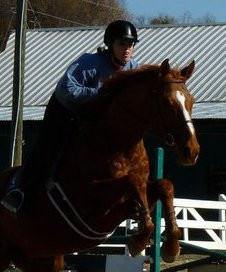
When I was 8, I would get up at 2 or 3 am in the morning while it was still pitch black out. I would put the bareback pad and bridle on my pony and we would head up into the mountains. I would pause and watch the amazing sunrise from a mountain peak and just bask in how good the first sun rays feel. Then I would turn for home and race home to get cleaned up and off to school. I go back to this memory a lot. After my accident, I lost the confidence of this little girl and I had to get it back. Whether you have had an accident, or just anxiety and fear creeping in with age, we don't have to stay there. We can turn back the hands of time and become that fearless kid again.
Here are my first three tips for confidence when back in the saddle:
1. Practice, Practice, Practice. The more we repeat something, the more the anxiety and fear fade. The first time will be the hardest as long as we focus on the success of doing the first time. Just keep doing the little, small steps, over and over until they seem as easy as brushing your teeth. Muscle memory helps with the mind too!
2. Work on the little things. Pick 5 or 6 things to play with for each ride. Circle, figure eight, backing, move shoulders, move haunches, walk/halt/walk transitions, whatever it is for you, pick the easiest things first until they are really good.
3. Practice Balance. When standing on the ground, you are solid. Practice putting weight in your stirrups. Move one slightly ahead of the other. Please with your weight in the stirrups and just see how it feels. What if you have almost no weight in the stirrups. What if you put all your weight in and stand in two point. Play with it and develop the balance the works for you. Think about a child on someone's shoulders. If they lean they and the person carrying them are off balance. You are the child on the horse as far as balance goes. Really take some time and play with your balance and weight in your stirrups. Alicia Dickenson says 80% of the weight in the stirrups at all times. I can say that this is when I feel most balanced too. I feel like I can ride anything that might happen.
Beat Your Anxiety!
If you’re looking for extra support to face your riding anxiety head-on, my Courage Coaching Program is here for you. We’ll work on strategies to strengthen your mindset, embrace challenges, and turn setbacks into steppingstones. Whether you want to improve your riding performance or just build more confidence in everyday life, I’m here to help.
Click HERE to learn more and join the program. Let’s tackle this journey together!
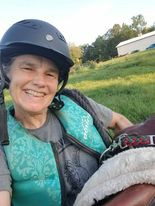
After my accident, I unknowingly spent 20 years living in my own comfort zone. During this time, I avoided trail riding and hacking out with my horses, things I once loved. When I did the math, it shocked me—those 20 years equaled 7,300 opportunities I missed to trail ride. We all have that line, the edge that we struggle to cross, maybe it is mounting, trail riding, cantering, or even in some cases, leading your horse. There is a point, the edge of the comfort zone, that we go from confidence to anxiety or even fear.
Think of your home. It’s your sanctuary, a place where you feel safe and protected from the chaos of the world. Your home is where you rest, recharge, and feel secure. In many ways, your comfort zone is like a subconscious "home" you create for yourself. It’s the mental space where you feel emotionally and physically safe, free from risk, uncertainty, and fear. But just like any home, staying within your comfort zone can eventually limit your experiences and growth.
Our comfort zones are designed to keep us safe from perceived threats—whether emotional, physical, or psychological. They offer a sense of security and stability, much like the four walls of a home. However, staying in that bubble for too long can prevent us from venturing out into the world. It can keep us from embracing new opportunities, trying new things, and facing our fears. There isn't anything wrong with this and each person has to decide if and when they cross the edge of their comfort zone.
The problem with living in a constant state of safety is that life outside the comfort zone is where growth happens. It’s in those moments of discomfort—when we step outside our bubble—that we learn, build resilience, and discover new strengths.
When I finally realized how much time I had lost to fear, I knew I had to push myself beyond the bubble. It wasn’t easy, but every step outside of my comfort zone brought me closer to rediscovering the joy of riding and living fully.
If you’re stuck in your own comfort zone, it’s time to start earning those Courage Pennies. The first step is always the hardest, but with each small victory, you’ll feel more empowered. To help you get started on your journey, I’m offering a free eBook, The Ultimate Guide to Courage Pennies. Inside, you’ll find simple yet powerful steps to help you build courage and move beyond your comfort zone.
Don’t wait another 7,300 opportunities. Take the first step toward living a fuller, braver life today.
